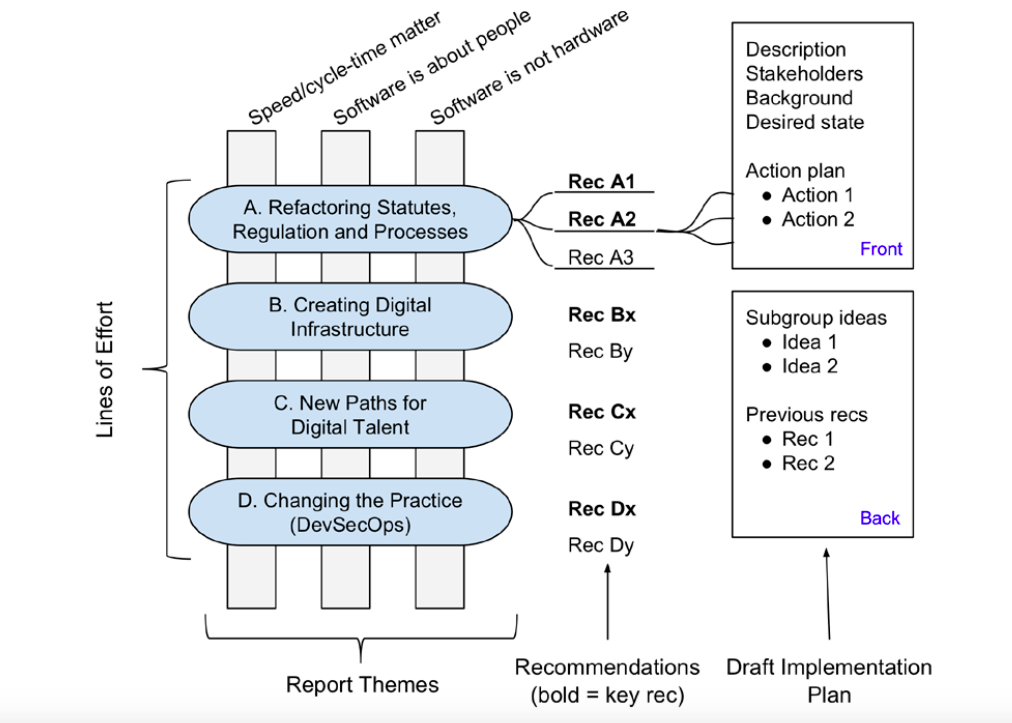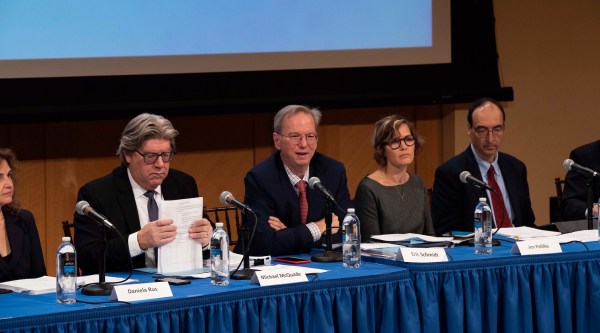Defense Innovation Board introduces software acquisition study

Members of the elite Defense Innovation Board introduced a draft of their Software Acquisition and Practices (SWAP) study Thursday during a public board meeting at the National Defense University.
The study, which was congressionally mandated by the fiscal 2018 National Defense Authorization Act, comes down to 10 recommendations structured around three themes and four areas of effort. (There are also 16 additional recommendations, structured in the same way, which represent the “next set of things to do,” said board member Richard Murray.)
Murray and Michael McQuade, the study’s leads, briefly introduced the draft Thursday, along with each of the top-level recommendations. The document, which was created by an internal Department of Defense team, was also published to the board’s website last week.
The three main themes in the report are:
- Speed and cycle time are the most important metrics for software;
- Software is made by people and for people, so digital talent matters; and
- Software is different than hardware.
The four “lines of effort” the board recommends to realize these three themes are:
- Refactor statutes, regulations, and processes for software;
- Create and maintain cross-program/cross-service digital infrastructure;
- Create new paths for digital talent (especially internal talent); and
- Change the practice of how software is procured and developed.
These areas target different stakeholders in the software acquisition process. The first of these lines of effort is targeted at Congress and the secretary of Defense; the second for the secretary and the various services; the third squarely at the services; and the fourth at acquisition officials and contractors.
Each area has component recommendations attached. For example, to “refactor statutes, regulations and processes for software,” Congress and the secretary should endeavor to create “a new acquisition pathway for software that prioritizes continuous integration and delivery of working software in a secure manner, with continuous oversight from automated analytics.”
The study also recommends that the secretary “establish and maintain digital infrastructure within each Service or Agency that enables rapid deployment of secure software to the field and incentivize its use by contractors; Create software development groups in each Service consisting of military and/or civilian personnel who write code that is used in the field and track individuals who serve in these groups for future DoD leadership roles; Make security a first-order consideration for all software-intensive systems, under the assumption that security-at-the-border will not be enough” and more.
Like the science and tech enthusiasts they are, the study’s authors included this diagram of how the themes, lines of effort and recommendations are structured:

SWAP study structure. (Screenshot)
The draft study also includes an implementation plan for each recommendation. McQuade announced that the internal team that worked to produce the study has been funded to stay on and help with implementation.
While some of the recommendations are pretty independent of each other, the board warned against thinking of it as a pick-what-you-like kind of situation. “It’s not a complete Chinese menu… they do depend on each other,” Murray said.
Various members of the board spoke up to praise the creation of the study, its readability and its contents. “You cannot imagine a rational objection to [the content of the report],” Neil deGrasse Tyson said. “This changes my view on the value for reports,” DIB Chairman Eric Schmidt added.
The board then voted unanimously to approve the document. The study will now be delivered to the DOD within the next two weeks, Executive Director Josh Marcuse said, before the department officially sends it to Congress in “early May.”





